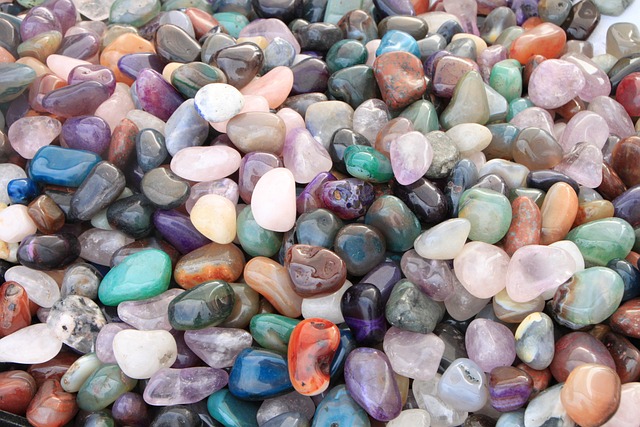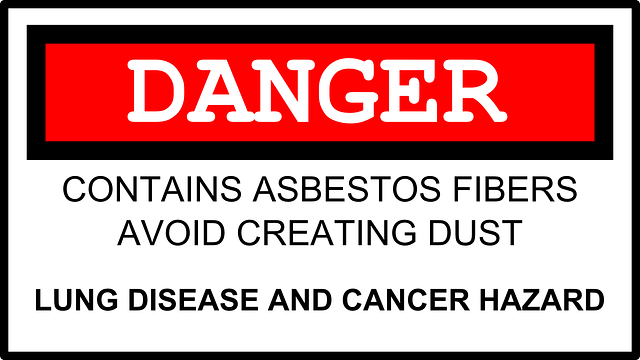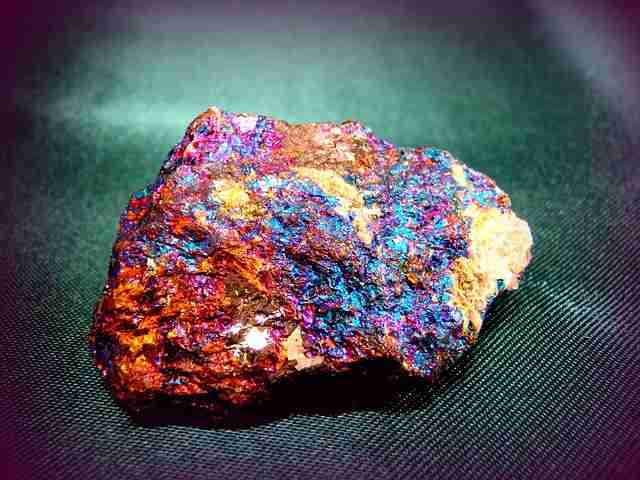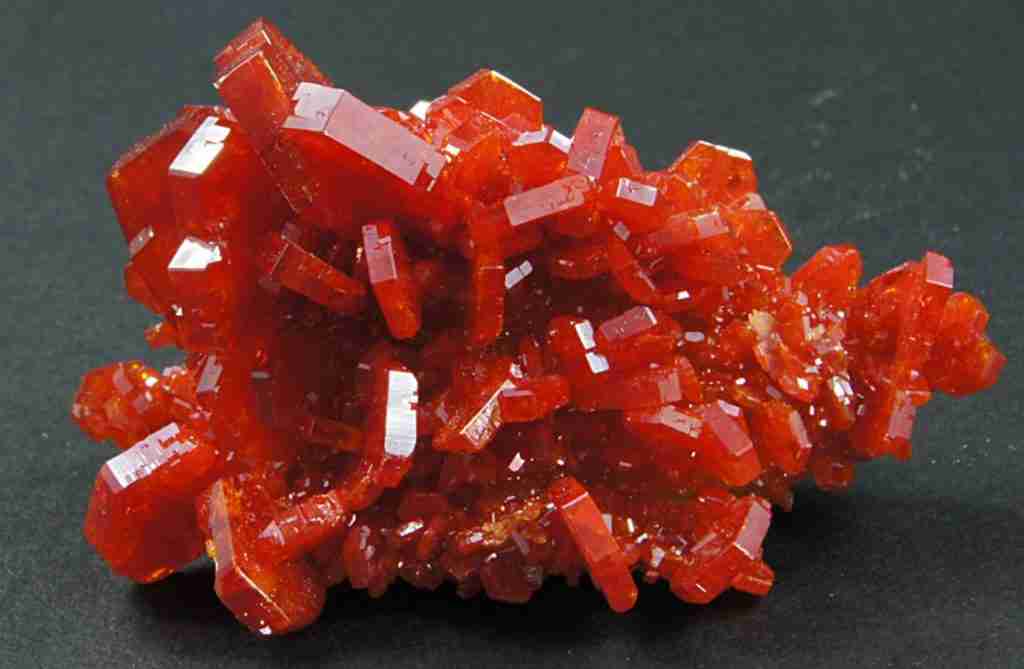Identifying Toxic Crystals and Harmful Minerals: A Guide for Crystal Enthusiasts
Identifying Toxic Crystals and Harmful Minerals

Crystals and minerals have long been admired for their beauty and metaphysical properties. However, it’s essential to recognize that not all crystals are safe for direct contact or ingestion. Some crystals contain toxic elements or minerals that can harm human health. In this guide, we will explore how to identify toxic crystals and harmful minerals, providing valuable information for crystal enthusiasts to ensure their safety and well-being.
Understanding Crystal Toxicity
Each crystal comprises various elements, such as metals, minerals, and compounds. Some elements can be toxic to humans in certain forms or quantities. It’s important to know the composition of the crystals you own or plans to acquire to assess any potential risks.
- Crystal Composition: Crystals are composed of various elements, and some can be toxic in certain forms or quantities.
- Handling Precautions: Even if a crystal is generally safe, it’s crucial to handle them carefully, especially in powdered form or with sharp edges.
Identifying Harmful Minerals
Common Toxic Minerals: Some minerals commonly found in crystals can pose health risks. These include arsenic, lead, mercury, asbestos, and radioactive minerals.
Recognizing certain characteristics can help identify crystals that may be toxic:
Metallic Luster: Crystals with a metallic sheen may indicate the presence of toxic metals like lead, arsenic, or mercury.
Powdery Residue: When touched, crystals that leave a powdery residue may contain harmful substances.
Strong Odor: Crystals with a strong, unpleasant odour may indicate the presence of toxic compounds.
Common Harmful Minerals: Several minerals contain toxic elements or compounds. Some common harmful minerals include:
- Asbestos: A group of fibrous minerals that can cause severe lung diseases when their microscopic fibres are inhaled. For comprehensive information about asbestos and the diseases it may cause, you can visit asbestos.com.
- Cinnabar: A bright red mineral containing mercury, which is toxic and can harm the nervous system.
- Galena: A lead sulfide mineral that can release toxic lead particles if crushed, creating a risk of lead poisoning.

Here are a few more minerals known to contain toxic elements or compounds:
- Realgar: Realgar is an orange-red mineral that contains arsenic. Arsenic is highly toxic and can cause serious health issues if ingested or inhaled.
- Orpiment: Orpiment is a yellow mineral that also contains arsenic. It has similar toxicity risks as realgar.
- Stibnite: Stibnite is a greyish-black mineral composed of antimony sulfide. Antimony can be toxic if ingested or inhaled over extended periods.
- Cinnabar: As mentioned earlier, cinnabar is a bright red mineral that contains mercury. Mercury is highly toxic and can have severe effects on the nervous system.
- Crocidolite: Crocidolite is a type of asbestos mineral known as “blue asbestos.” Inhalation of crocidolite fibres can lead to serious lung diseases, including mesothelioma.
- Chrysotile: Chrysotile is another type of asbestos mineral known as “white asbestos.” It shares similar health risks with other asbestos minerals.
- Uraninite: Uraninite is a radioactive mineral that contains uranium. It emits harmful radiation and should be handled with extreme caution.
- Torbernite: Torbernite is a bright green mineral that contains uranium. Like uraniumite, it poses radiation hazards and should be handled carefully.
- Vanadinite: Vanadinite is a vibrant red mineral that contains lead. It can release toxic lead particles when crushed or powdered.
- Wulfenite: Wulfenite is a yellow-to-orange mineral that also contains lead. It carries similar risks as vanadinite in terms of lead toxicity.
These are just a few examples, and other minerals may contain toxic elements or compounds. Researching and exercising caution when handling or working with minerals is crucial to ensure personal safety and well-being.
Physical Characteristics: Certain physical characteristics can help identify minerals that may be harmful:
- Fibrous or Powdery Texture: Minerals with a fibrous or powdery texture, such as asbestos, should be handled cautiously to avoid inhaling the microscopic particles.
- Metallic Luster: Some minerals with a metallic lustre, like cinnabar, may contain toxic elements and require careful handling.

Safe Handling Practices
Research and Education: To identify harmful minerals effectively, it’s important to research and educate yourself:
- Reliable Sources: Consult reputable mineralogy references, field guides, or scientific literature to learn about minerals and their potential hazards.
- Expert Advice: Seek guidance from experienced mineral collectors, geologists, or professionals in the field who can provide valuable insights.
Safe Handling and Collection: When dealing with minerals, it’s crucial to take appropriate precautions:
- Personal Protective Equipment: Use gloves, masks, or protective eyewear when handling minerals that may release harmful particles or contain toxic substances.
- Ventilation: Work in a well-ventilated area or use protective measures to prevent inhalation of dust or particles.
- Display and Storage: Keep harmful minerals securely stored in sealed containers or displays to prevent accidental exposure.
Professional Testing: In some cases, professional testing may be necessary to determine the presence of harmful minerals. Laboratories specializing in mineral analysis can provide detailed information about mineral composition and potential risks.

Appropriate Uses for Crystals
- External Use: Many crystals can be safely used externally for healing purposes, such as in crystal layouts, massage, or wearing as jewellery.
- Energetic Properties: Crystals can still benefit you energetically without direct contact or ingestion. Place them nearby or use them in meditation and energy work.
Unsafe Practices to Avoid
- Ingesting Crystals: Never consume crystals unless you are 100% certain of their safety and have expert guidance.
- Making Crystal Elixirs: While some crystals are safe to infuse in water, others can leach harmful substances. Stick to well-known safe crystals like clear quartz or consult an expert for guidance.
While crystals offer many benefits and can enhance our lives, it’s crucial to be aware of their potential toxicity. By understanding the composition of crystals, identifying harmful minerals, and practising safe handling, you can enjoy the beauty and energy of crystals while prioritizing your health and well-being.
Note: This blog post provides general information and guidelines. It is not a substitute for professional advice. Always consult experts or reputable sources for specific concerns related to crystal toxicity.

Here is a list of 100 toxic crystals:
- Actinolite
- Adamite
- Alexandrite
- Amazonite
- Arsenopyrite
- Atacamite
- Aurichalcite
- Azurite
- Beryl (varieties such as Aquamarine, Emerald, and Morganite)
- Bornite
- Cacoxenite
- Calaverite
- Caledonite
- Cerussite
- Chalcanthite
- Chalcopyrite
- Chrysocolla
- Cinnabar
- Conichalcite
- Copper (in its raw form)
- Covellite
- Crocoite
- Cuprite
- Danburite
- Dioptase
- Dolomite (high manganese content)
- Eilat Stone
- Epidote
- Galena
- Garnierite (nickel ore)
- Hematite (in large quantities)
- Hiddenite
- Iolite
- Kyanite (fibrous variety)
- Lepidolite (high lithium content)
- Linarite
- Malachite (in powdered form or unsafe handling)
- Marcasite
- Mimetite
- Moldavite (some individuals may have sensitivities)
- Monazite
- Orpiment
- Petalite
- Phenacite
- Pollucite
- Psilomelane
- Pyrite (in powdered form)
- Pyromorphite
- Realgar
- Rhodochrosite (in powdered form)
- Rhodonite (in powdered form)
- Scheelite
- Selenite (water-soluble)
- Serpentine (fibrous variety)
- Smithsonite
- Sphalerite
- Spinel (some colour varieties)
- Stibnite
- Stilbite
- Sugilite (contains trace amounts of toxic elements)
- Sulfur (in powdered form)
- Thomsonite
- Thorite
- Tiffany Stone (Bertrandite)
- Torbernite
- Tremolite
- Ulexite
- Vanadinite
- Variscite
- Vesuvianite (in powdered form)
- Vivianite
- Wavellite
- Willemite
- Wulfenite
- Zeolite (fibrous varieties)
- Zircon (some colour varieties)
- Zoisite (fibrous variety)
- Alum (potassium aluminium sulfate)
- Antimony (mineral form)
- Asbestos (fibrous variety)
- Barium minerals (such as Barite and Witherite)
- Cinnabar (mercury sulfide)
- Cobalt minerals (such as Cobaltite and Erythrite)
- Galena (lead sulfide)
- Mercury (liquid metal)
- Orpiment (arsenic sulfide)
- Realgar (arsenic sulfide)
- Stibnite (antimony sulfide)
- Torbernite (uranium mineral)
- Uvarovite (contains trace amounts of chromium)
- Vanadinite (lead vanadate chloride)
- Wulfenite (lead molybdate)
- Aurorite
- Zirconium minerals
- Brimstone (sulfur)
- Chalcanthite (copper sulfate)
- Cinnabar (mercury sulfide)
- Galenite (lead sulfide)
- Vanadinite (lead vanadate chloride)
- Witherite (barium carbonate)
Please note that this list is not exhaustive, and it’s essential to exercise caution and proper handling when dealing with any crystals or minerals. Always consult reliable sources and experts for guidance on crystal safety.
How can toxic crystal water be made?
It’s important to note that creating gemwater (also known as crystal-infused water) using toxic crystals is generally not recommended due to the potential risks associated with their toxicity. Many crystals contain elements or compounds that can be harmful if ingested or leached into the water.
However, if you still wish to explore gemwater practices, alternative methods can be used to experience the energy of crystals without direct contact. Here are a few safe approaches:
- Indirect Method: Place the toxic crystal outside a sealed glass container and then fill the container with water. This way, the crystal’s energy can potentially influence the water without the crystal coming into direct contact with it. However, it’s important to research the specific crystal’s toxicity and keep it securely outside the container.
- Energetic Charging: You can use indirect charging instead of placing the crystal directly in the water. Surround the glass container with the toxic crystal nearby or create a crystal grid around it to infuse the water with its energy. This method avoids direct contact between the crystal and the water.
- Crystal Elixirs: Another alternative is to create a crystal elixir indirectly. Prepare the crystal-infused water as described above. Instead of consuming the water directly, use a few drops of the gemwater to add the crystal’s energetic essence to a separate drink or spray. This way, you can enjoy the energetic properties without risk ingesting any potential toxins.
Always exercise caution and conduct thorough research before attempting any crystal practices involving potentially toxic crystals. Consult reliable crystal experts, crystal healing books, or trusted sources to ensure your safety and well-being. Browse gemwater category for non-toxic crystal water recommendations.

